15 Moments That Remind Us Horror Isn’t Just in the Movies

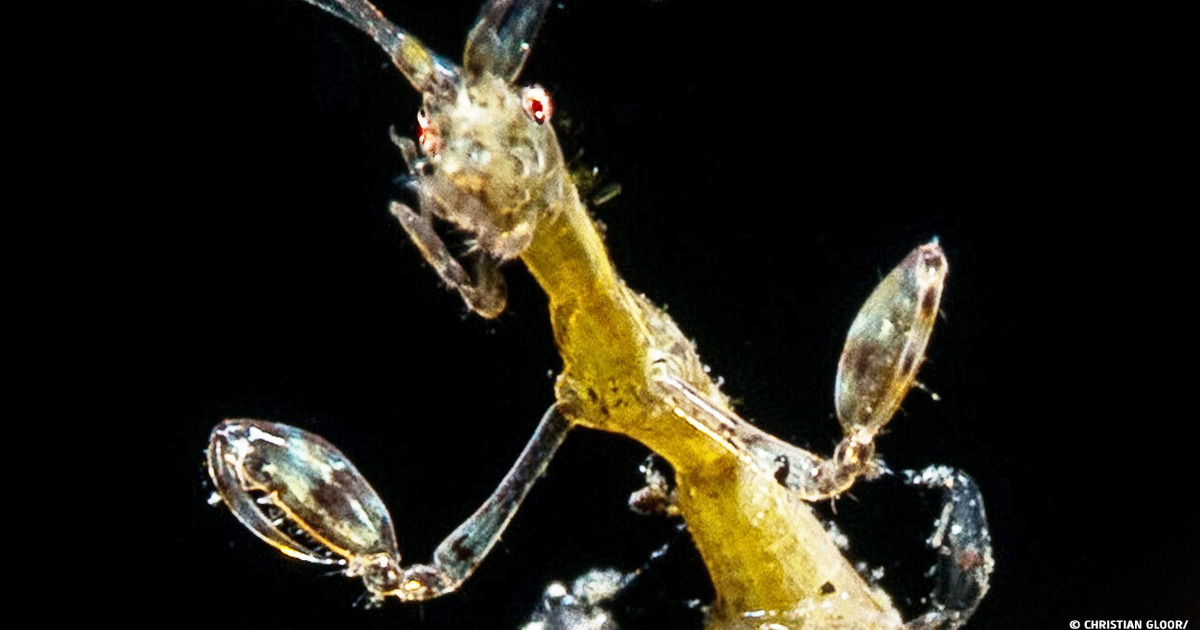
The Heikegani Crab lives off the coast of Japan and has a distinct pattern on its shell that looks like a human face. More specifically, the face of an angry samurai, hence the nickname: The Samurai Crab.
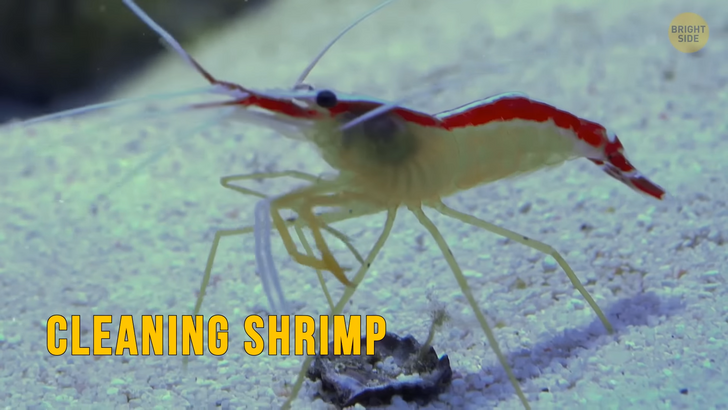
The Scarlet-striped Cleaning Shrimp is a natural hitchhiker: it stands on the sea floor and waves its long antennae for fish and sea animals to go down and pick it up. Then it pays for the ride by cleaning the host from bacteria and plankton.
Sea Salps are often confused with jellyfish, although they’re closer to Portuguese man’o’war. They’re very quick to mature, growing from newborns to adults in less than 48 hours!
The Galapagos Islands are legendary. They’ve got Giant Tortoises, Blue-Footed Bobbies, Sally lightfoot crabs, and red-lipped batfish! But if you’ve ever swum around there, you might’ve seen something really unexpected in the water. Iguanas! Everywhere! These large marine reptiles eat the algae that grow on underwater rocks... they’re strict vegetarians! I bet the fish are happy about that! A long flat tail designed for swimming helps them move around, and sharp claws keep them on the rocks for their daily sunbathing sessions. But watch them closely, they sneeze a lot! They haven’t got a cold or anything; they’re sneezing out salt! A special gland keeps the salt out of their nose and they’ve got to get rid of it somehow. Sounds painful. What’s cool is that they don’t mind us in the water with them! Because the islands have been so isolated, the creatures here aren’t afraid of humans!
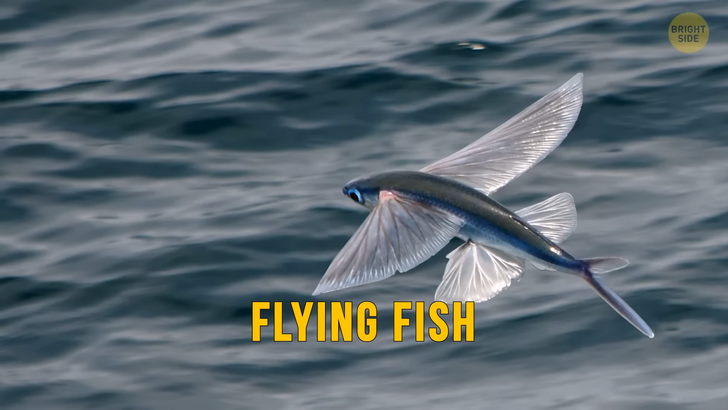
Fish can fly too! Thanks to their wing-like fins, Flying Fish can soar a distance of about 600 ft, almost as long as two football fields. They need a flight to escape from predators.
The Skeleton Shrimp could be the stuff of nightmares if it wasn’t so tiny. As it is, it looks like a stick insect, but almost completely transparent.
This creature looks more like a fish from a horror movie than from Earth’s oceans! The Seadevil Anglerfish resides at a whopping depth of 3,200 ft and has no shortage of weird features: razor-sharp teeth, a misshapen body, and an unsettling stare. But perhaps the creepiest thing about the Seadevil Anglerfish is the way it catches its prey. It has a fishing-rod type appendage on its forehead that has a glowing light attached to the end to attract animals. Once these animals come close enough to the light — BAM! They’re captured by the Seadevil’s massive jaws. These guys are even capable of eating prey larger than they are. So their eyes aren’t bigger than their stomachs...
Starfish can cover their prey with their stomachs and eat it outside its body. Then, they simply bring their stomachs back inside. Well that’s handy.
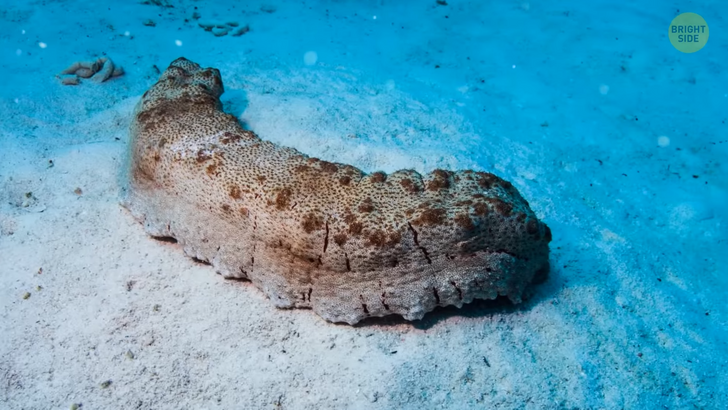
Their relatives, Sea Cucumbers, can do the same party trick. Except that they leave part of their guts behind to scare their attacker! It’s OK — the missing parts quickly grow back!
Cockatoo Squids, or Glass Squids, are a large genus whose members can reach quite impressive size. Yet one thing they have in common is that their bodies are transparent and the internal organs glow in the dark.
Despite the Hairy Octopus looking like it’s forgotten to comb its hair in the morning, it’s actually its skin that’s sticking in every direction. Other sea creatures have a harder time realizing where the octopus itself is this way, I guess.
The Hairy Squat Lobster lives in reefs, hiding from its enemies in crevices. If you’re lucky to see it, you’ll instantly notice the drastic difference between its whitish hairs and vibrant pink and violet claws.
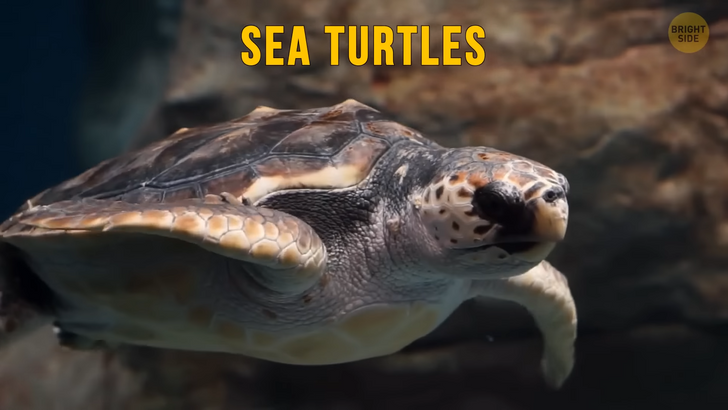
If you step on a Sea Urchin, you’re going to know right away! Look at those spikes!While they’re not aggressive, they’ve got a great defense going against any creature that wants to eat them! Venomous spikes and a poisonous bite! Pick your poison, literally. They live in all of the oceans of the world, so avoiding them is out of the question. They mostly hang out in shallow water, hiding in rock pools and reefs. So, unmindful people step on them a lot! The long venomous spikes of the urchin look like needles. Feel like them too. They can go in quite deep, plus they release a strong toxin. So what’s the cure? Remove the spikes quickly, and wash with saltwater.
Sea Turtles are constantly crying. They’re not sad or anything — the weeping is only because they excrete excess salts from their body through their tears.
Box Jellyfish tentacles grow up to 10 ft long! And each tentacle has 5,000 stinging cells! Not bad for a creature that’s mostly just water. Their venom is strong enough to paralyze anything they want to eat. Now, if you happen to get stung, it’s going to hurt, a lot! Its toxins contain proteins that affect the heart, skin cells, and even our nervous system! No wonder it’s considered one of the most dangerous creatures on the planet! I wouldn’t recommend using sunscreen, soda, coffee, or other... older methods. They don’t work! Your best bet is some good old fashioned seawater. Looks like jellyfish are the rulers of the ocean, not sharks!
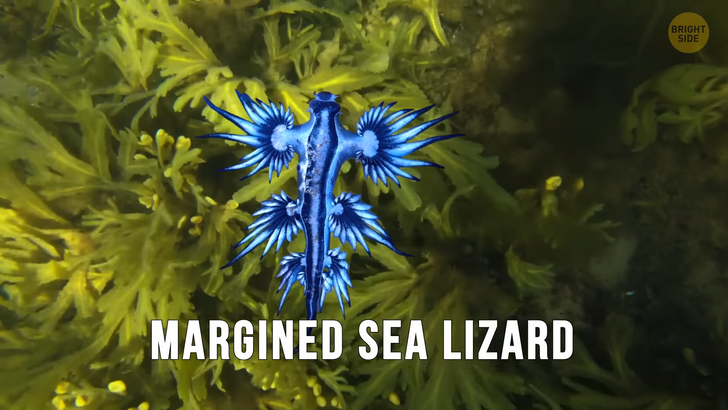
The Margined Sea Lizard isn’t an actual lizard — it’s a kind of sea slug that dwells close to the water surface. It swims upside down and somersaults to get food, and let’s admit, it looks very cute.
When some foreign object gets into an Oyster’s shell — be it a grain of sand, a parasite, or garbage — the thing irritates the mollusk’s inner walls. Since the animal can’t spit the item out, it envelops it in thin layers that separate from the body. These pearlescent layers accumulate until they form a round pearl. In the past, people believed that pearls were the tears of mermaids. Now we know they’re just some decorated debris!
Dolphins have highly developed communication. They call each other by name. Each dolphin responds to a specific sound. Mostly they say, “Stop calling me, Flipper”.
The Orca is the largest of dolphin species. And they actually have different cultures! Two orcas from different social groups won’t even understand each other’s language! They’re the only animal known to do this. I wonder if they’ve developed any Google Translate for dolphins.
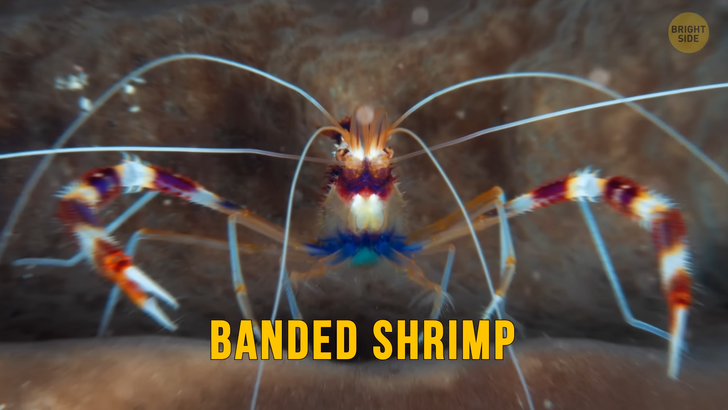
The Banded Shrimp, or banded boxing shrimp was really aptly named: it’s got bands of color all over its body and always stands in a boxer-like ready to strike pose.
The Brown-Lined Paper Bubble is another sea slug, and it definitely looks like one. It’s got a special ability, though: it can quickly burrow holes in the sea floor, hiding from enemies inside them.
The Snakefish, as the name implies, looks a lot like a snake, but it has a very distinctive feature: it can walk on its fins. Thanks to this peculiarity, it easily crawls from one waterbed to another, choosing habitats more to its liking. On the way, a snakefish can get hungry, for sure, so it often munches on small birds and rodents. It can grow quite big, though, and hunt even larger animals. How much weirder can it get than to walk through the woods and suddenly see a huge and toothy fish stalking some rabbit?
The Alligator snapping turtle catches its prey by going fishing! Its tongue looks like a worm, and the turtle waits with its mouth wide open at the bottom of a stream, lake, or pond until some unsuspecting fish takes the bait. Then...snap! The jaws come together faster than the blink of an eye, and dinner is served!
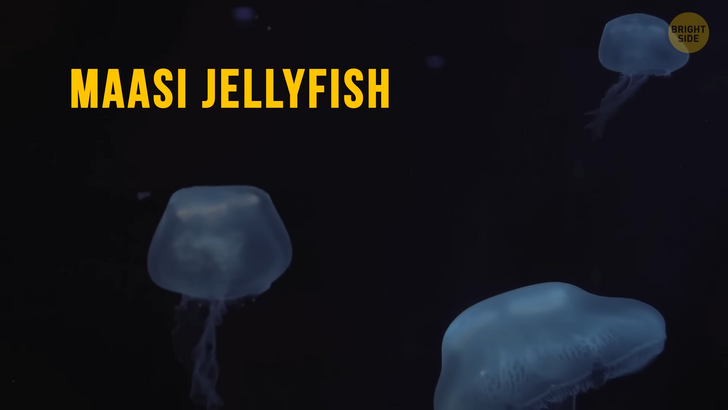
The Maasi Jellyfish is normally invisible in the dark abyss where it dwells, but when exposed to light, it will reflect it and shine beautifully.
The Black Swallower might be small, but make no mistake: it could easily gulp down your favorite puppy! It can open its mouth extremely wide, allowing it to swallow prey twice its size.
The African Tigerfish will eat whatever it finds, and given its own size and that of its monstrous teeth, you can imagine it finds a lot of food. It mostly feeds on other fish, but when nutrition is scarce, it can jump out of the water and catch both insects and small birds right in the middle of the flight. It’s not so big as to eat a human, of course, but the name should warn you that it can easily take a bite out of your arm or leg.
Your brain controls your arms and legs, but with an Octopus, each arm is actually kinda independent with its own special brain, held together by a bigger central brain. Kinda like the conductor of an orchestra. The central brain sends higher-level signals to each arm, saying things like “move to the left, there’s a crab behind the corner”, or “touch this silly human’s foot, let’s mess with him a little bit hehehe...” No matter how smart their arms and legs might be, an octopus still needs to look after them all the time.











